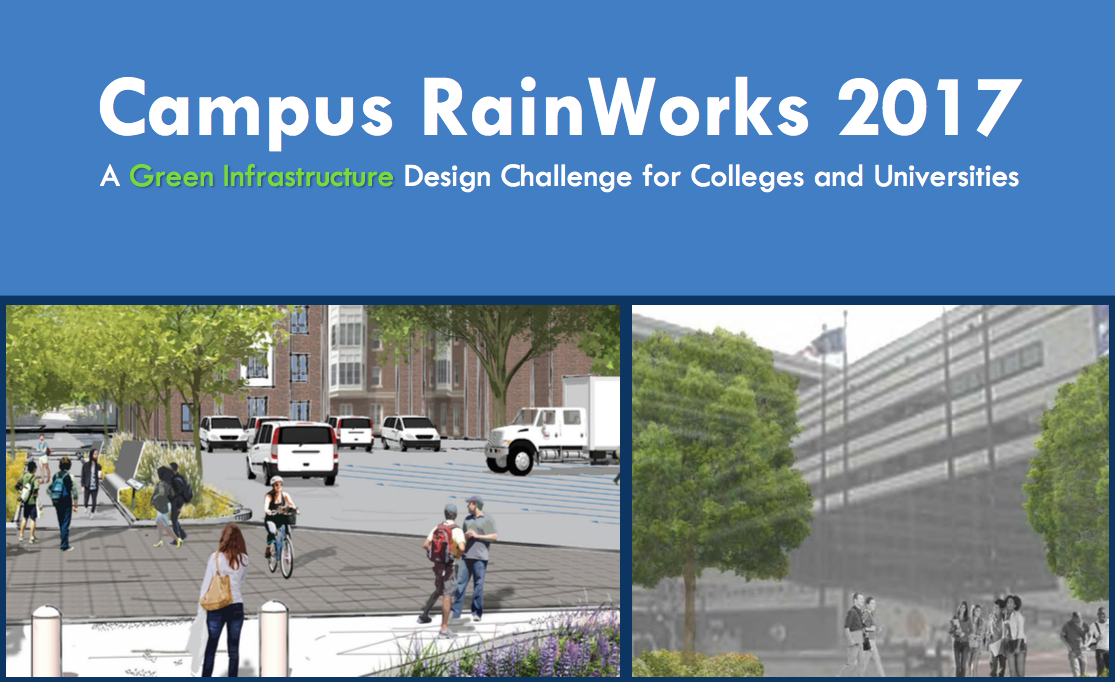Attention All Students: The EPA Wants Your Stormwater Designs!

School is back in swing, which means it’s time for the EPA’s annual Campus RainWorks Challenge!
Each year, teams from universities around the country come up with innovative new ways to manage stormwater on their campus. The RainWorks Challenge fosters a dialogue about responsible stormwater management and showcases the environmental, economic and social benefits of green infrastructure practices.
Student teams design an innovative green infrastructure project for their campus that effectively manages stormwater pollution while benefitting the campus community and the environment.
Last year, the two first-place winners were teams from the City College of New York and Kansas State University, both of whom created new systems for managing stormwater through green infrastructure on their very different campuses. You can read about the winning designs here. Stormwater innovation is its own reward of course, but winning teams receive a cash prize for their designs as well!
Erik Coats, past PNCWA President and Environmental Engineering Professor at the University of Idaho, says that collaboration between the EPA and college students is important, and encourages more engineering students to get involved in stormwater research. “I have found that of all the ‘water’ areas, stormwater is most misunderstood by engineering students. Stormwater needs increasingly more attention—much of the water-environment pollution is associated with water other than treatment plant effluent," says Coats. "Getting engineering faculty and students involved with this important aspect of our infrastructure will go a long way toward achieving future solutions.”
Interested in winning some cash and improving your campus’s stormwater management? Registration is the first step, and closes September 30, 2017. Register here!
Learn more at the official RainWorks Challenge site or download the 2017 competition brief (PDF) today. If you’re past your schooling days, make sure you share the challenge with the environmental engineer student in your community!
